The story of astronomical research at the Van Vleck Observatory is one of people working with precision instruments to carry out the observations, measurements, and calculations that enabled astronomers to figure out the distances to the nearby stars. This fundamental research, while often tedious and routine, was an important first step that allowed scientists to establish the scale of the universe. Determining the distance to the stars through parallax was the main activity of the Van Vleck Observatory for most of the 20th century.
The objects in the observatory’s collections reveal how astronomers, computers, and other staff carried out their work at different moments in time, and how changes in instrumentation and technology changed the nature of that work.
The Mann Measuring Engine
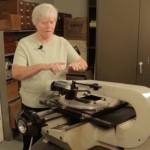 Measuring Astronomical Plates (5:21)
Measuring Astronomical Plates (5:21)
Calculating the distances to the stars involved taking photographs of the night sky over and over and over again during different times of the year, and then measuring the relative positions of the stars in the field. Linda Shettleworth first started working at the observatory in the 1980s, when she was hired to measure astronomical plates for the parallax program. In this video, she describes how she used the Mann measuring engine to carry out the precise measurements required for computing the distances to the stars.
The Millionaire Mechanical Calculator
Number-crunching—what astronomers refer to as “data reduction”—was the next step in making parallax determinations. The Van Vleck Observatory’s computing staff were aided in their work by a mechanical calculating machine called “The Millionaire.” In this series of videos, astronomer Roy Kilgard shows how this 19th-century machine works.
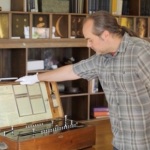 An Introduction to the Millionaire (2:20)
An Introduction to the Millionaire (2:20)
In this video, Roy introduces us to the Swiss-patented “Millionaire” and explains its key features. He tells the story of this 19th-century mechanical calculator, how it came to Wesleyan, and why it was such an important instrument for the staff at the Van Vleck Observatory.
 Addition and Subtraction (3:15)
Addition and Subtraction (3:15)
What does a hundred-year-old calculator sound like? In this video, Roy explains how the Millionaire mechanical calculator performs the basic arithmetical operations of adding and subtracting numbers using clockwork. He then demonstrates its workings with a series of simple calculations.
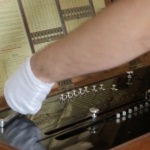 Multiplication (1:34)
Multiplication (1:34)
Building on the operations of addition and subtraction, Roy shows how the Millionaire multiplies numbers and handles significant digits.
 Division (5:13)
Division (5:13)
Dividing numbers through clockwork is a much more difficult problem. In this video, Roy explains the challenges of performing division mechanically, and demonstrates how a skilled operator would have used the Millionaire to expedite the process of calculating remainders in long division.
Restoring the Van Vleck Refractor
As the signature research instrument of the Van Vleck Observatory’s parallax program, and the object around which the observatory was designed, the 20-inch refracting (lens-based) telescope housed in the main dome has been central to the history of astronomy at Wesleyan. One hundred years of use had taken its toll, though, and between 2013 and 2015, engineer Fred Orthlieb and several Wesleyan students carefully restored and modernized the telescope. In this series of videos taken while the telescope was disassembled, Fred reveals the inner workings of this historic instrument.
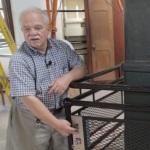 The Elevating Floor (1:34)
The Elevating Floor (1:34)
In 1916, one of the most modern features of the observatory was the elevating observing platform inside the dome. This made it easy for astronomers to sit comfortably while observing, regardless of the angle at which they were pointing the telescope. In this video, Fred explains how the elevating floor also came in handy in the restoration process.
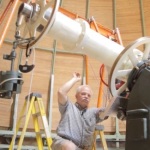 The Motion of the Telescope (5:37)
The Motion of the Telescope (5:37)
How do you get a giant tube to point to the place in the sky you want to look at? In this video, Fred demonstrates how the the telescope moves, and offers an inner look at the gearing that makes it possible.
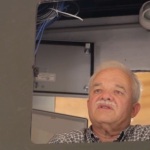 Inside the Pier (2:02)
Inside the Pier (2:02)
Restoring a telescope sometimes involves getting into tight places. In this video, Fred takes us inside the telescope’s pier to show off the modern electronic control system, and explains the great menace of squirrels. Yes, squirrels.
At the top: The 20-inch refracting telescope housed in the Van Vleck Observatory’s main dome dates from the 1920s and was manufactured by Alvan Clark and Sons. It looks particularly imposing in this undated photograph, probably from the 1950s or 1960s. Vertical Files Photograph Collection, Box 38, Special Collections & Archives, Olin Library, Wesleyan University.